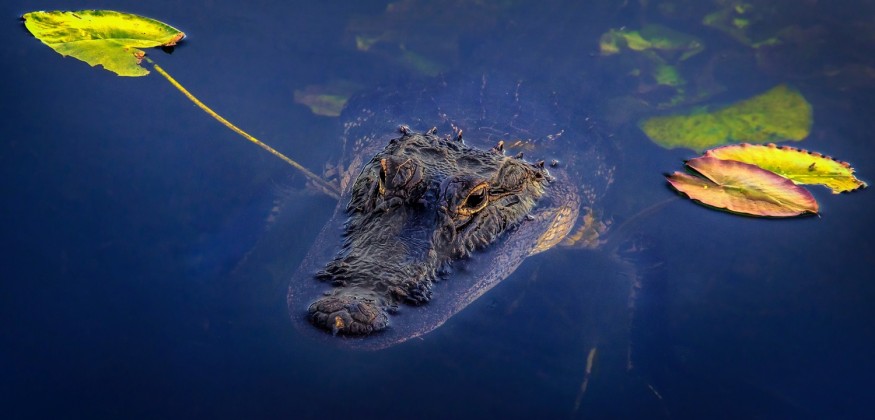An alligator is a crocodilian from the family Alligatoridae. They are indiscriminate, opportunistic feeders that feed on a wide range of species that vary in size. Bigger alligators tend to prey on bigger animals, like buffalo, cattle, and horses.
But in a rare event, a Texas woman, who was enjoying Easter at Surfside Beach, unexpectedly recorded on her camera how swiftly an alligator snapped a snake in the canal.

Alligator Ate Snake on Easter
Kristy Garza was with her family at her parent's beach house celebrating Easter when she caught an alligator stalking a swimming snake in the canal. She told local news outlet KSAT that she went down to the canal to get a closer look and first saw the snake. She decided to record the animal.
In the video posted on Facebook, the unsuspecting snake caught the eye of the alligator. However, it was too late since the alligator was already swimming toward it. In a swift move, the big reptile snapped the snake and ate it alive.
Aside from the snake, Garza said the alligator also came close to getting a duck, but the latter was quick to evade the attack. She was able to record it on video, but the alligator was not visible because of distance.
Texas Parks and Wildlife Department explains that alligators are carnivores and apex predators that are keystone species across wetland areas in the US. They feed on fish, turtles, lizards, snakes, small mammals, crustaceans, and other alligators.
Feeding Habits of Alligators
According to the International Union for Conservation of Nature's (IUCN) Crocodile Specialist Group, crocodilians are opportunistic feeders that are most active at night and feed between dusk and dawn. However, their nocturnal nature is easily overridden if the prey is available nearby.
Younger alligators eat smaller animals, such as shrimps, insects, snails, small fish, tadpoles, and frogs. But adult alligators eat larger animals, like birds, turtles, reptiles, and mammals.
They use their sharp teeth to bite their prey whole and then spin it wildly until bite-size portions are torn off. Alligators have about 80 teeth that can sometimes be broken or lost but also regrow over time.
They also employ the "sit and wait" strategy in which they seem to be inactive but suddenly lunge on their prey at the right moment. Alligators mostly take their victims at the water's edge, and younger ones usually lie in shallow waters where they attack their prey.
Some are also skilled in feeding on mussels and other benthic faunas at the bottom of the lake or water body. Other feeding behaviors of alligators also included them cruising across the shoreline and swinging both their tail and head on the bank to trap fish.
Although they usually feed on their own, there are also times when they congregate in large numbers, attacking a carcass and inadvertently assisting each other to tear pieces away.
RELATED ARTICLE: Massive 10-Foot Alligator Walks in a Neighborhood in Florida on Easter Sunday as Mating Season Begins [Watch]
Check out more news and information on Alligators in Science Times.
© 2026 ScienceTimes.com All rights reserved. Do not reproduce without permission. The window to the world of Science Times.












